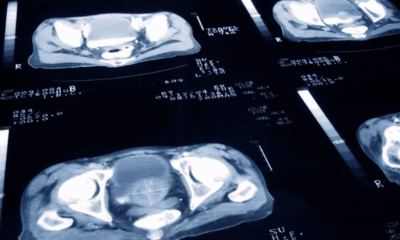Health
Post-Pandemic Surge in Infections Linked to ‘Immunity Debt’ Across Europe
Although the COVID-19 pandemic has subsided, European countries are facing a rise in non-COVID infections, including respiratory illnesses. Health experts point to a phenomenon known as “immunity debt” as a major factor behind the increased number of cases.
In Denmark, cases of Mycoplasma pneumoniae, a bacterium that causes respiratory infections, have tripled during the 2023-2024 season compared to pre-pandemic years. Hospitalizations among children and teenagers in Denmark have also risen, up by 2.6 times. Despite this surge, Danish health authorities report that the severity of these infections remains unchanged compared to previous years, indicating that while more children are falling ill, they are not becoming more seriously sick than before.
The situation is not unique to Denmark. Other countries, including England, Germany, and France, have reported unusually high levels of respiratory illnesses such as Respiratory Syncytial Virus (RSV) since the pandemic.
“There has been quite a bounceback in a number of these infections which were not circulating significantly for a good winter or two, and they came back with quite a vengeance,” said Dr. Peter Openshaw, a respiratory specialist from Imperial College London.
What is Immunity Debt?
Immunity debt refers to the reduced exposure to common viruses during the height of the COVID-19 pandemic, when public health measures such as lockdowns, social distancing, and frequent handwashing significantly lowered transmission rates of various non-COVID infections. While these restrictions helped curb the spread of viruses and eased the burden on healthcare systems during the pandemic, they also led to a drop in natural immunity among the population.
Many viruses, like certain flu strains, disappeared almost entirely, while others, like RSV, resurged once restrictions were lifted. As more people began socializing and mixing again, these dormant viruses found a susceptible population to infect, particularly among younger children who had not been exposed to them during the pandemic.
According to Dr. Amesh Adalja, an infectious disease expert from Johns Hopkins University, immunity debt was an “inevitable” consequence of pandemic-era measures, but those restrictions were crucial in saving lives. “Decreasing burdens on hospitals during the height of COVID, it was good to go in debt for that,” he explained.
Why the Term is Controversial
While the term “immunity debt” accurately describes the resurgence of infections post-pandemic, it has become controversial. Some argue that it implies natural infections are better for the immune system than vaccines, or that pandemic restrictions were unnecessary. However, experts, including Dr. Openshaw, reject these notions, emphasizing that public health measures saved thousands, if not millions, of lives.
RSV, for example, is a common virus that typically causes mild symptoms in young children. However, due to pandemic restrictions, many babies who would have been exposed to RSV were not, leading to a larger pool of susceptible individuals once the restrictions were lifted.
Looking Ahead
To address immunity debt, health experts are advocating for stronger vaccination efforts. Since 2023, RSV vaccines have been made available to pregnant women and older adults in the European Union and the UK, in an effort to protect the most vulnerable populations.
Despite these measures, hospitals across Europe are facing significant challenges. Ongoing staffing shortages and limited capacity are making it difficult to handle surges in common childhood infections and pneumonia among adults. As Dr. Openshaw noted, “We’re still seeing a lot of hospital attendances and serious illness with these viruses because they’re circulating at a higher-than-previous level.”
With winter approaching, the strain on healthcare systems is expected to grow, making it crucial for governments to bolster public health measures and vaccination programs to mitigate the effects of immunity debt.
Health
Europe Faces Growing Challenges in Meeting Medical Care Needs, EU Report Shows

A new report has highlighted stark disparities in healthcare access across Europe, revealing that a growing number of citizens face unmet medical needs due to systemic issues such as high costs and long waiting times.
According to the latest data from Eurostat and the Health at a Glance: Europe 2024 report, 3.8 per cent of EU residents aged 16 and over reported unmet medical needs in the past year. However, the percentage climbs significantly when focusing solely on individuals who actively required healthcare services — with some countries reporting unmet needs among over 20 per cent of this group.
The causes are twofold: healthcare system barriers, including long waiting lists and treatment costs, account for 2.4 per cent of all cases, while 1.4 per cent stem from personal reasons such as fear of doctors, lack of time, or lack of knowledge about available care.
Unmet healthcare needs vary widely across the continent. Estonia tops the list within the EU, with 15.5 per cent of people reporting unmet needs, followed closely by Greece and Albania, each over 13 per cent. Even wealthier Nordic countries show surprising figures — Denmark (12.2 per cent), Finland, and Norway (over 7.5 per cent) — despite high healthcare spending. Conversely, countries such as Germany (0.5 per cent), Austria (1.3 per cent), and the Netherlands (1.4 per cent) report the lowest levels, pointing to more efficient and accessible healthcare systems.
Cost is a dominant barrier in nations like Greece and Albania, where over 9 per cent of citizens cited unaffordable care. In contrast, long waiting times are the primary issue in countries like Estonia (12 per cent) and Finland (7.5 per cent).
Income inequality also plays a major role. On average, 3.8 per cent of low-income individuals across the EU report unmet needs due to healthcare system issues — more than triple the 1.2 per cent reported by higher-income groups. In Greece, that gap is particularly wide, with 23 per cent of low-income respondents affected.
Healthcare experts say these disparities reflect more than just economic factors. Dr. Tit Albreht, President of the European Public Health Association (EUPHA), noted, “Unmet health needs arise from different reasons, including how well healthcare governance integrates services to meet population needs.”
Industry leaders, such as Tina Taube of the European Federation of Pharmaceutical Industries and Associations (EFPIA), stressed the importance of timely access to diagnosis and treatment. “Unmet needs are context-specific,” she said. “It’s not just about product availability, but also healthcare system readiness.”
Andy Powrie-Smith of EFPIA added that patients in some European countries wait up to seven times longer than others for the same treatments due to regulatory delays and varying national infrastructures.
The findings underscore the need for a more coordinated, equitable healthcare strategy across the continent, especially as Europe faces the challenges of an ageing population and increasingly complex medical technologies.
Health
Chinese Nationals Charged in U.S. with Smuggling Toxic Fungus Labeled a Potential Agroterrorism Threat

U.S. federal authorities have charged two Chinese nationals in connection with smuggling a dangerous agricultural fungus into the country, a move investigators describe as posing significant national security risks.
Yunqing Jian, 33, and Zunyong Liu, 34, are accused of conspiracy, smuggling, making false statements, and visa fraud after allegedly attempting to bring Fusarium graminearum — a toxic fungus capable of devastating crops and harming humans and livestock — into the United States. The case was detailed in a court filing by the Federal Bureau of Investigation (FBI) in Detroit.
The fungus, which targets essential food staples like wheat, maize, barley, and rice, is described in a scientific journal cited by the FBI as a “potential agroterrorism weapon.” Experts warn that its spread could inflict serious damage on global food security and agricultural economies.
U.S. Attorney Jerome Gorgon Jr. emphasized the seriousness of the case, stating: “The alleged actions of these Chinese nationals, including a loyal member of the Chinese Communist Party, are of the gravest national security concerns.”
Jian made her first appearance in a Detroit federal court on Tuesday and remains in custody awaiting a bond hearing scheduled for Thursday. A court-appointed attorney for her initial appearance declined to comment.
According to the FBI’s complaint, the investigation began in July 2024 when Liu was stopped at Detroit Metropolitan Airport. During a routine screening, customs officials discovered suspicious red plant material in his backpack. Liu initially claimed not to know what it was but later admitted he planned to use it for research purposes at the University of Michigan, where Jian is currently employed and where Liu previously worked.
Authorities say Liu’s mobile phone contained an article titled “Plant-Pathogen Warfare under Changing Climate Conditions,” raising further concerns about the intended use of the samples. The FBI believes the two individuals were coordinating to introduce the pathogen into a U.S. research setting without proper clearance or oversight.
Liu was denied entry to the U.S. and deported in July. Charges against both individuals were filed this week, as prosecutors continue to investigate the scope of the alleged conspiracy.
The case underscores growing concerns in the U.S. over biosecurity and potential misuse of scientific research amid rising geopolitical tensions.
Health
US Expands Measles Vaccination Guidance Amid Global Surge in Cases
-

 Business1 year ago
Business1 year agoSaudi Arabia’s Model for Sustainable Aviation Practices
-

 Business1 year ago
Business1 year agoRecent Developments in Small Business Taxes
-

 Politics1 year ago
Politics1 year agoWho was Ebrahim Raisi and his status in Iranian Politics?
-

 Business11 months ago
Business11 months agoCarrectly: Revolutionizing Car Care in Chicago
-

 Business11 months ago
Business11 months agoSaudi Arabia: Foreign Direct Investment Rises by 5.6% in Q1
-

 Technology1 year ago
Technology1 year agoComparing Apple Vision Pro and Meta Quest 3
-

 Politics1 year ago
Politics1 year agoIndonesia and Malaysia Call for Israel’s Compliance with ICJ Ruling on Gaza Offensive
-

 Sports10 months ago
Sports10 months agoKeely Hodgkinson Wins Britain’s First Athletics Gold at Paris Olympics in 800m


























